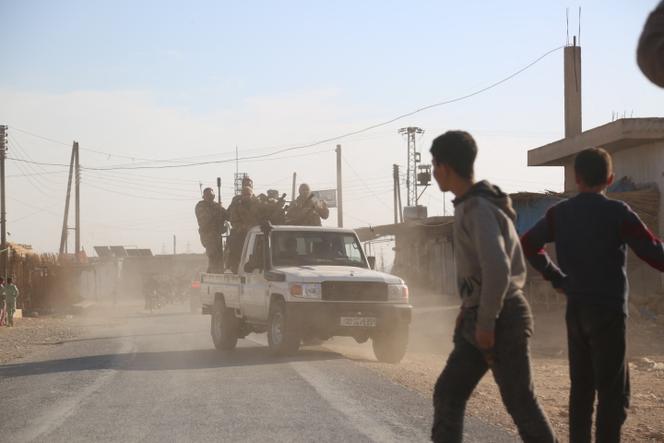


Encouraged by the change of regime in Damascus, Turkish President Recep Tayyip Erdogan, a major supporter of the Syrian rebellion, seized the opportunity to send the Turkish-backed rebels of the Syrian National Army (SNA) organization into several towns in northeastern Syria that had previously been controlled by Kurdish forces. Kurdish fighters were driven out of Tal Rifaat on Sunday, December 8, and from the city of Manbij the following day. Now, they face the threat of being expelled from the Kobani region by these Turkish proxies. On Tuesday, December 10, dozens of air strikes targeted this region, in which the SNA has access to support from Turkish fighter jets and armed drones.
Unlike the Islamist rebels of the Hayat Tahrir al-Sham (HTS) group, who went to great lengths during their lightning offensive across Syria to spare the civilian population, and favored negotiation to get Kurdish fighters out of the Aleppo airport they controlled, the SNA has wreaked havoc in the towns it has captured. "Right now, thousands of people are fleeing Kobani out of fear of the Turkish-affiliated Syrian National Army – a much greater fear than that provoked by Hayat Tahrir al-Sham, which has, as of yet, committed no violations, massacres or attacks against civilians. In contrast, the SNA receives its directives from the Turkish state and carries out the elimination of the Kurds," said Ahmad Araj, secretary general of the Syrian National Democratic Alliance, contacted by telephone from Aleppo, in northern Syria, on Tuesday.
While the Kurds, who have been supported by the United States for their role in the fight against the Islamic State (IS) organization, administer a vast area in eastern Syria, they appear to be losing out amid the new situation in the country. The SNA offensive completely corresponds with the longstanding plan set out by Erdogan, who is eager to push the Kurds as far away from the border zone as possible. Indeed, on Monday, he expressed his delight at his proxies' success on the ground, accusing the Syrian Kurds of seeking to "turn chaos into opportunity."
Erdogan's plan, which he has devised over many years, aims to extend a "buffer zone" eastward. This zone, made up of territory inside of Syria conquered by the Turkish army between 2016 and 2019, stretches along a large part of the 900-kilometer border between the two countries.
You have 63.13% of this article left to read. The rest is for subscribers only.
